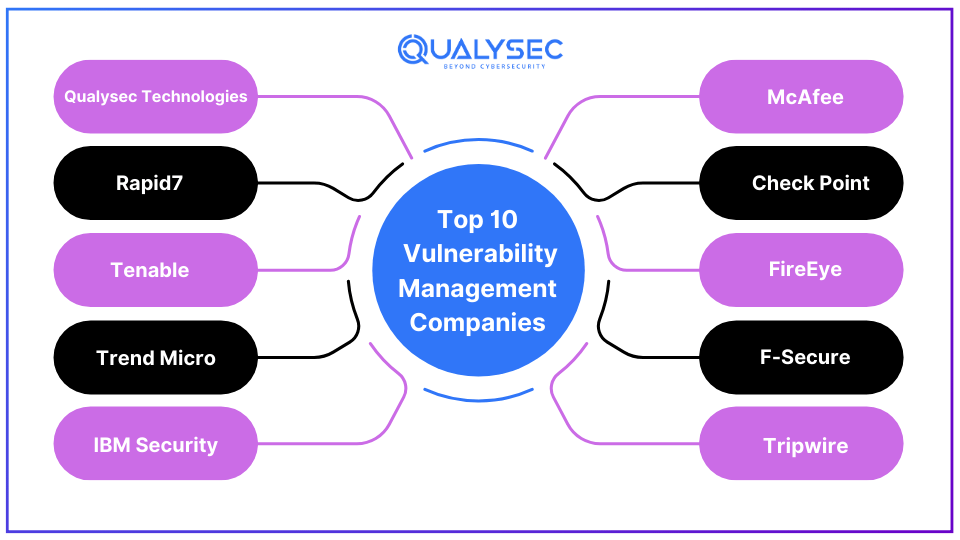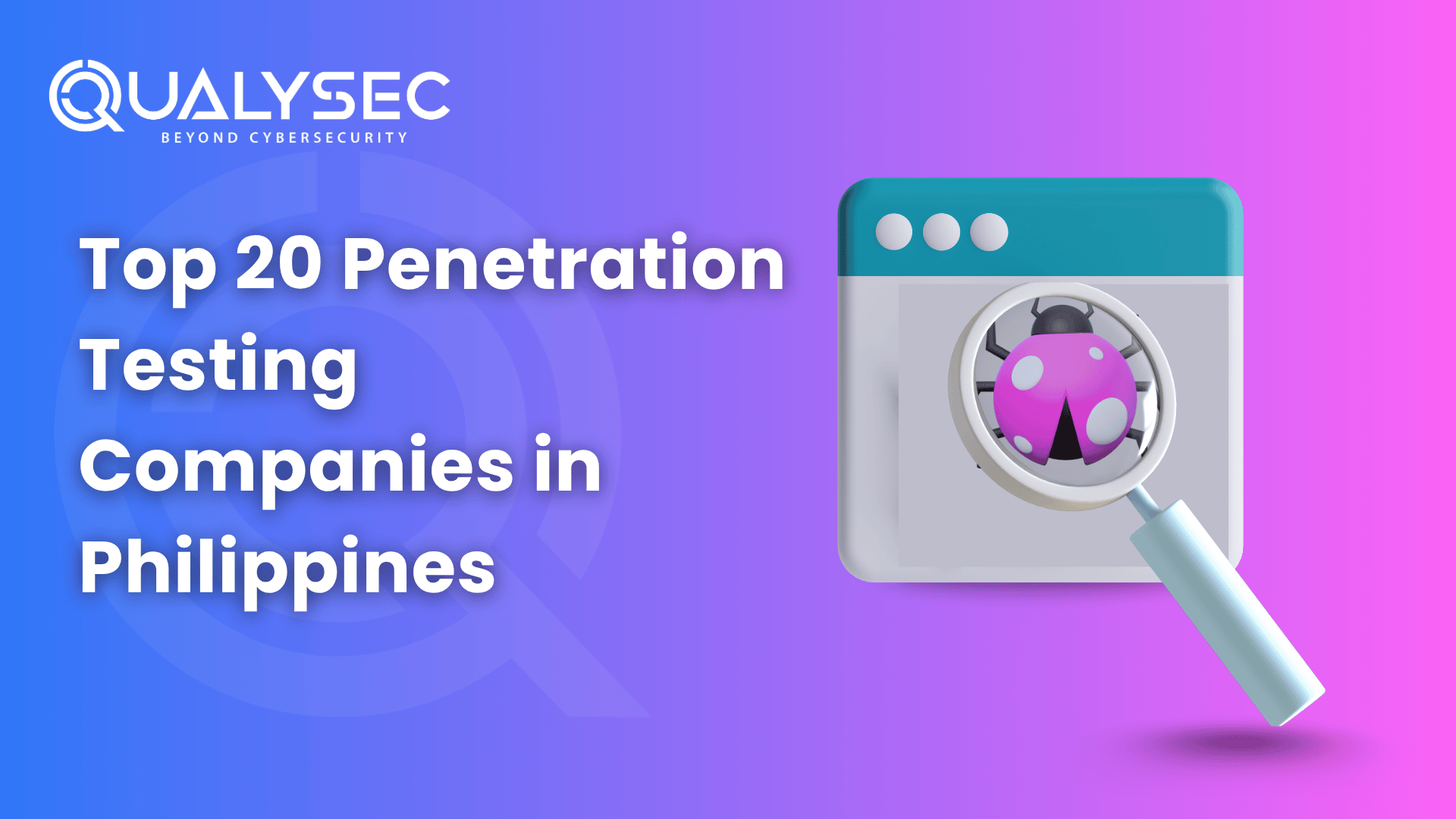Preserving the confidentiality of the data and ensuring proper security measures are crucial. Vulnerability management services involve detecting, evaluating, and handling security threats within an organization’s IT environment. Further, they are helpful to organizations in preventing and mitigating weaknesses that may be exploited by cybercriminals or used for unlawful purposes.
For instance, a healthcare provider dealing with patient data can use Vulnerability Management As A Service (Vmaas) to conduct recurrent assessments on the network to check for possible threats, gain insights on the suitable patches to apply, and prevent data leakage.
Therefore, the blog will deal with top vulnerability management services and providers. Additionally, it will give readers an insight into the types and key features of vulnerability management.
What is Vulnerability Management?
Vulnerability management is an ongoing security process of identifying, assessing, reporting, managing, and remediating vulnerabilities across various systems and applications. Typically, a security team uses various tools and software to detect security vulnerabilities and suggests steps to fix them. Most organizations in the digital landscape need a strong vulnerability management program to protect their data and critical resources from evolving cyber threats.
Vulnerability Management As A Service (Vmaas)
Vulnerability management services involve assessing, analyzing, treating, and documenting security vulnerabilities of the systems and software. The services comprise constant monitoring, scanning, and analysis of any security loopholes that hackers may exploit. Therefore, the primary objective is to prevent security threats by identifying weak points and blocking them with layered security measures.
Types of Vulnerability Management Services
Types of vulnerability management services are:
1. Network Vulnerability Scanning
Continuously monitoring an organization’s network to discover the various weak points, misconfigurations, and vulnerabilities.
2. Application Security Testing
Auditing web and mobile applications and verifying that they are not vulnerable to major threats such as SQL injection and cross-site scripting.
3. Penetration Testing
The process of mimicking the conditions that may lead to the systems’ breaches known as penetration testing, is used to understand how cybercriminals can endanger the organization’s infrastructure.
4. Patch Management
Verify that all the software and systems are updated with the latest security patches and updates.
Key Features of Vulnerability Management Services
Key features of vulnerability management services are:
1. Continuous Monitoring
Monitoring systems and networks to watch out for any weaknesses in a system in real-time.
2. Automated Scanning
Automated tools for scans and identification of weaknesses so that they can be found quickly and effectively.
3. Risk Assessment and Prioritization
Analyzing the existing and possible risks about the potential degree of exposure. This is a key part of managing cybersecurity vulnerabilities effectively.
4. Detailed Reporting
The reports contain details of the vulnerabilities found, their seriousness, and what measures should be taken to address them.
Would you like to see a vulnerability management sample report? Click on the box below to download one!
Latest Penetration Testing Report

5. Integration with Other Security Tools
Compatibility with other security products, including integration with SIEM systems, to increase security management capabilities.
6. Compliance Support
Make sure that there is compliance with the regulations that have been introduced covering vulnerability management activities.
Top 10 Vulnerability Management Companies
These are the top vulnerability management companies that offer Vulnerability Management As A Service (Vmaas):

1. Qualysec Technologies
Qualysec Technologies offers the best VAPT services that comply with your industry’s processes while being well-structured and precise. Utilizing the best testing approaches and experienced professionals, Qualysec determines risks in your applications and secures them with modern protection tactics.
Penetration Testing Approach
Qualysec provides security services based on a systematic approach that uses automated and manual pen testing techniques. This approach covers a wide area with precision while identifying security vulnerabilities. Further, Qualysec’s services will help organizations avoid compliance issues with regulatory measures, including SOC 2, ISO 27001, and HIPAA.
Wider Variety of Penetration Services
Qualysec offers a wide array of penetration testing services to identify security vulnerabilities, including:
- Web Application Penetration Testing
- Mobile Application Penetration Testing
- API Penetration Testing
- Cloud Security Penetration Testing
- IoT Device Penetration Testing
- AI/ML Penetration Testing
Why Choose Qualysec?
Based on its wider cybersecurity solutions and a team of skilled and certified security specialists, Qualysec is one of the leading penetration testing service providers. Moreover, the Qualysec team is perfect for businesses seeking to protect their external network, applications, and infrastructure services.
Connect with Us
All set to protect your online property? Contact Qualysec Technologies now and partner with a reputable vulnerability management service provider to protect your digital tomorrow.
Talk to our Cybersecurity Expert to discuss your specific needs and how we can help your business.
2. Rapid7
Rapid7 is a well-known cybersecurity company that started in 2000. They specialize in vulnerability management, incident detection, and response solutions.
Services offered by Rapid7:
- Vulnerability management
- Cloud Security
- Threat intelligence
3. Tenable
Tenable was founded in 2002. Therefore, it is a cybersecurity company focusing on vulnerability assessment and exposure management.
Services offered by Tenable:
- Vulnerability management
- Configuration assessment
- Cloud Security
- Web application scanning
4. Trend Micro
Trend Micro was established in 1988. They are well-known for their cybersecurity solutions. Moreover, they provide a broad range of services, which also include vulnerability management.
Services offered by Trend Micro:
- Vulnerability protection
- Threat detection and response
- Cloud Security
- Endpoint protection
5. IBM Security
IBM Security provides cybersecurity services and solutions to their clients. They are a well-known name in the field because they have served their customers for decades.
Service offered by IBM:
- Vulnerability management
- Threat intelligence
- Risk management
- Cloud Security
6. McAfee
McAfee is a cybersecurity company that was formed in 1987. They provide system security services, which entail strong vulnerability management solutions.
Services offered by McAfee:
- Vulnerability scanning
- Endpoint security
- Data protection
- Cloud Security
7. Check Point Software Technologies
Check Point Software Technologies was established in 1993. The company is a cybersecurity solutions provider specializing primarily in vulnerability management.
Services offered by Check Point Software Technologies:
- Threat Prevention
- Cloud Security
- Vulnerability management
- Mobile Security
8. FireEye (Mandiant)
Mandiant, previously known as FireEye, started in 2004. They specialize in services like understanding threats, dealing with emergencies, and managing weaknesses in systems.
Services offered by FireEye (Mandiant):
- Vulnerability management
- Incident response
- Penetration testing
- Managed defense
9. F-Secure
F-Secure specializes in protecting computers and networks from threats. In addition, it started in 1988 and is famous for providing high-level services to handle and repair security issues.
Services offered by F-Secure:
- Endpoint protection
- Vulnerability management
- Cloud Security
- Incident response
10. Tripwire
Tripwire is a known provider of security and compliance solutions. They have been assisting organizations in protecting their IT platform since 1997. In addition, the vulnerability management services provided by Tripwire are trusted by businesses worldwide.
Services offered by Tripwire:
- Vulnerability assessment and management
- Configuration assessment
- File integrity monitoring
- Policy compliance
Essential Factors for Choosing the Best Vulnerability Management Services
The following are some crucial factors that will help you choose the right vulnerability management service.
1. Scope of Coverage
Ensure that the service covers all areas of your IT infrastructure, from the network to systems, applications, and databases.
2. Ease of Use
The service must also be easy to use and deploy, with a straightforward interface and well-organized processes.
3. Scalability
Choose a solution that can be easily expanded to meet your other goals as your business grows. This includes the capacity to handle higher volumes of data or enlarging IT structure.
4. Integration Capabilities
Check and ensure the service can work harmoniously with the other security solutions and tools you use, like the SIEM systems and endpoint protection.
5. Expert Support
Expert support is essential to address complicated vulnerability issues and apply proper remediation measures. Select a provider that has experienced security personnel who can solve the problems.
Top 10 Vulnerability Management Tools
In addition to vulnerability management services, some tools allow organizations to assess security vulnerabilities. The following vulnerability management tools are widely recognized for their ease of use:
1. Nessus
Nessus is another well-known vulnerability scanner created by Tenable organization. Additionally, it provides all-rounded scanning features regarding network, systems, and application vulnerabilities.
2. OpenVAS
OpenVAS is one of the vulnerability scanners that scan for vulnerabilities in a system and generate the most elaborate reports. Being a cost-effective option, it is ideal for organizations that are price-sensitive.
3. QualysGuard
QualysGuard is a web application vulnerability management tool that works as a SaaS and provides security assessments, vulnerability scans, and detailed reporting. Further, this is used in almost every organization regardless of its size.
4. Rapid7 InsightVM
InsightVM is a vulnerability management software from Rapid7 that helps manage vulnerabilities. Additionally, it provides all the aspects of scanning, risk assessment, and compatibility with other security solutions.
5. Nmap
Nmap is an open-source network scanning program that can be used to discover network devices’ security flaws. It, therefore, has numerous scan features and provides detailed reports.
6. OpenSCAP
OpenSCAP is an open-source software that can implement security measures, monitor for vulnerabilities, and generate compliance reports and remediation instructions. Thus, it is most commonly implemented in enterprise environments.
7. Microsoft Baseline Security Analyzer (MBSA)
MBSA is a free tool developed by Microsoft that identifies vulnerabilities in Windows systems and offers tips on fixing the problem. It is a common selection for organizations that implement Microsoft products in their environment.
8. GFI LanGuard
GFI LanGuard is a tool for network security scanning. Thus, it offers vulnerability scans, the management of patches, and compliance reporting. Organizations of all types and sizes incorporate it into their strategies.
9. Retina Network Security Scanner
It is a comprehensive vulnerability management tool that can be used for automated scanning, risk analysis, and reporting. Additionally, it is widely implemented in enterprise settings.
10. Nexpose
Nexpose is a vulnerability assessment and management tool manufactured by Rapid7. It provides excellent scanning capability, risk management features, and compatibility with other security tools.
Conclusion
Vulnerability management is an important part of a cybersecurity plan. Primarily identifying, evaluating, and mitigating security threats, lowers the possibility of cyber threats and maintains data and systems’ safety. Further, the various services and tools organizations offer, allows them to protect their assets and remain secure.
Therefore, when selecting the top vulnerability management services, some aspects that should be considered include coverage, usability, comprehensiveness, compatibility, risk management, analysis and reporting tools, technical support, and affordability. To keep your computer systems safe and protected from different dangers, you need to look at all the important things and pick the right solution for your business.
FAQs
1. What are the steps of vulnerability management?
A. Vulnerability management encompasses vulnerability scan, risk assessment, prioritization, and remediation. This is mainly done through applying patch workarounds and vulnerability reviews.
2. What is the difference between vulnerability management and cybersecurity?
A. While vulnerability management involves early detection and mitigating specific gaps, cybersecurity offers a larger view. It encompasses protecting systems, networks, and data from several threats, utilizing strong approaches, standards, and solutions to attain cohesion, security, and readiness.
3. How to manage vulnerabilities?
A. Managing vulnerabilities is a set of constant processes. First of all, the scans and assessments must be performed frequently. Then, prioritize identified vulnerabilities. Next, executing the remedial steps, such as patches or configuration changes, is important. Last but not least is the need to constantly track and review the effectiveness of implemented protective measures against emerging threats.

















































































































































































































































































































































0 Comments